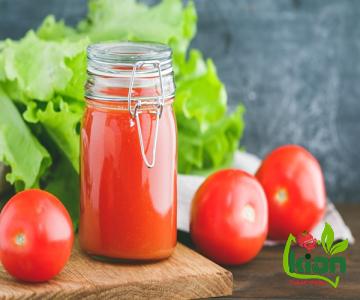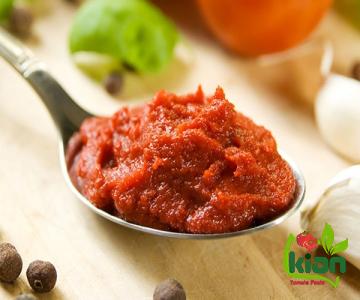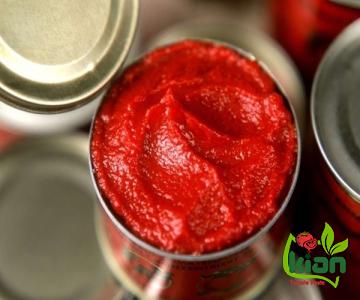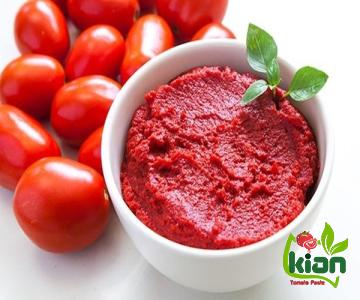Tomato paste is widely used in the food industry, adding flavor and richness to various dishes. However, occasionally, businesses may encounter an issue where their tomato paste turns out to be bitter. This article will delve into the causes and impacts of bitter tomato paste, as well as provide helpful solutions for businesses facing this challenge. 1. Understanding the Causes: a. Tomato Variety: The variety of tomatoes used can contribute to bitterness in tomato paste production. Some varieties naturally have a higher level of bitterness due to higher levels of certain compounds, such as alkaloids.

.
 b. Underripe Tomatoes: Picking tomatoes too early before they fully ripen can result in bitterness. The enzyme responsible for converting sugars to natural sweetness has not fully developed, leading to a bitter taste. c. Processing Techniques: Improper processing techniques, such as excessive heating or prolonged cooking times, can release bitter compounds in tomatoes. These bitter compounds can then be concentrated during the tomato paste production process. 2. Impacts of Bitter Tomato Paste: a. Flavor: Bitter tomato paste alters the flavor profile of dishes, affecting the overall taste. This can significantly impact the customer experience and satisfaction, potentially leading to a decline in sales or consumer loyalty.
b. Underripe Tomatoes: Picking tomatoes too early before they fully ripen can result in bitterness. The enzyme responsible for converting sugars to natural sweetness has not fully developed, leading to a bitter taste. c. Processing Techniques: Improper processing techniques, such as excessive heating or prolonged cooking times, can release bitter compounds in tomatoes. These bitter compounds can then be concentrated during the tomato paste production process. 2. Impacts of Bitter Tomato Paste: a. Flavor: Bitter tomato paste alters the flavor profile of dishes, affecting the overall taste. This can significantly impact the customer experience and satisfaction, potentially leading to a decline in sales or consumer loyalty.
..
 b. Perception of Quality: Bitterness in tomato paste may be perceived as a lack of quality control by consumers, who may associate it with a lower standard or compromised production practices. This perception can be detrimental to a brand’s reputation. c. Waste and Financial Loss: Bitter tomato paste may render an entire batch unusable, leading to waste and financial loss for businesses. The cost of production, raw materials, and labor can all be wasted if the issue goes undetected until the final stages of production. 3. Solutions for Businesses: a. Quality Control: Implement stringent quality control measures throughout the supply chain to ensure the tomatoes used for tomato paste production are mature and free from bitterness. Regular testing and tasting should be conducted to detect any bitterness in the raw materials at an early stage. b. Blending: Consider blending different varieties of tomatoes to balance the flavor and reduce the risk of bitterness. Mixing different varieties with varying levels of sweetness and acidity can result in a more well-rounded tomato paste.
b. Perception of Quality: Bitterness in tomato paste may be perceived as a lack of quality control by consumers, who may associate it with a lower standard or compromised production practices. This perception can be detrimental to a brand’s reputation. c. Waste and Financial Loss: Bitter tomato paste may render an entire batch unusable, leading to waste and financial loss for businesses. The cost of production, raw materials, and labor can all be wasted if the issue goes undetected until the final stages of production. 3. Solutions for Businesses: a. Quality Control: Implement stringent quality control measures throughout the supply chain to ensure the tomatoes used for tomato paste production are mature and free from bitterness. Regular testing and tasting should be conducted to detect any bitterness in the raw materials at an early stage. b. Blending: Consider blending different varieties of tomatoes to balance the flavor and reduce the risk of bitterness. Mixing different varieties with varying levels of sweetness and acidity can result in a more well-rounded tomato paste.
…
 c. Processing Techniques: Optimize processing techniques to minimize the chances of bitterness. Pay close attention to cooking temperatures, cooking times, and cooling processes to prevent the release and concentration of bitter compounds. d. Sensory Evaluation: Develop a sensory evaluation program where trained professionals taste test samples at different stages of production. By developing a keen understanding of the taste profile, bitter tomato paste can be identified, and necessary adjustments can be made. Conclusion: Bitter tomato paste can pose a significant challenge for businesses in the food industry. Understanding the causes, impacts, and potential solutions is essential for mitigating the risk of producing and distributing bitter tomato paste. Through proper quality control, blending techniques, optimized processing, and sensory evaluation programs, businesses can effectively address and overcome issues related to bitter tomato paste, ensuring consistent quality and customer satisfaction.
c. Processing Techniques: Optimize processing techniques to minimize the chances of bitterness. Pay close attention to cooking temperatures, cooking times, and cooling processes to prevent the release and concentration of bitter compounds. d. Sensory Evaluation: Develop a sensory evaluation program where trained professionals taste test samples at different stages of production. By developing a keen understanding of the taste profile, bitter tomato paste can be identified, and necessary adjustments can be made. Conclusion: Bitter tomato paste can pose a significant challenge for businesses in the food industry. Understanding the causes, impacts, and potential solutions is essential for mitigating the risk of producing and distributing bitter tomato paste. Through proper quality control, blending techniques, optimized processing, and sensory evaluation programs, businesses can effectively address and overcome issues related to bitter tomato paste, ensuring consistent quality and customer satisfaction.











Your comment submitted.